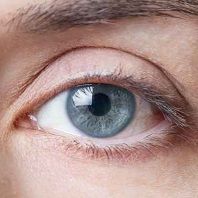Article
Indomethacin Paired With Ranibizumab May Improve AMD Symptoms
Author(s):
Italian researchers found that supplementing ranibizumab treatment with the daily administration of an NSAID solution improved AMD symptoms better than ranibizumab alone, and believe over time greater statistical significance will emerge.

Ranibizumab (trade name Lucentis), an anti-vascular endothelial growth factor (anti-VEGF) drug, is considered useful in restoring visual acuity for those that suffer from age-related macular degeneration (AMD). Seeking to find out if its efficacy can be further bolstered, Italian researchers tested it in combination with indomethacin, a non-steroidal anti-inflammatory drug (NSAID).
Indomethacin is also used in the treatment of various rheumatic conditions, including many forms of tendinitis and arthritis. In ophthalmological surgery applications, it is used to stabilize pupillary dilation or to minimize postsurgical inflammation.
The study observed 22 eyes in 22 patients. 11 patients received just initial monthly ranibizumab dosing for 3 months, and 11 more received the initial thrice monthly ranibizumab, which they followed up with three drops of 0.5% indomethacin solution daily for 6 months.
At the end of the 6 months, all 22 patients saw improvements in best-corrected visual acuity (BCVA). The combination group did see a greater improvement in both central macular thickness (CMT) and visual acuity than the ranibizumab-only group. The change in CMT was reported in the combination group as −129.2 µm (−30.1%; P < .01), while in the ranibizumab-only group, the change was −86.9 mm (−21.1%; P < .01). The gains in acuity over the control group were not statistically significant.
The study is ongoing, and it will report again at the one year mark.
Lead author Andrea Russo, MD, presented the findings at the American Academy of Ophthalmology 2016 Meeting in Chicago. He expressed confidence that, at the subsequent one year mark, continued indomethacin and ranibizumab combination treatment would continue to separate its efficacy from ranibizumab alone, and statistical significance would emerge.
Related Coverage
Assessing Rates of Noninfectious Vitritis after Intravitreal Injection of Anti-VEGF Agents
Amsler vs. Casa: Which Test Better Detects Early Wet AMD?
Difluprednate Shows Itself Effective for Intermediate Uveitis Treatment





